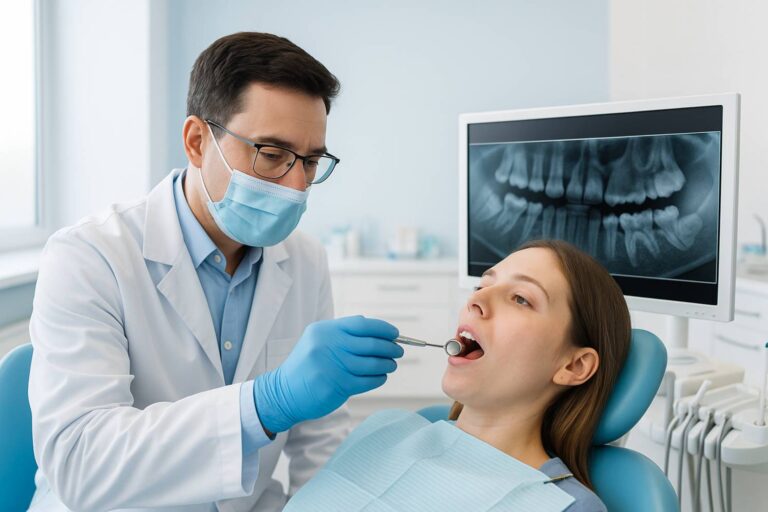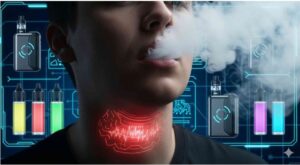I’ll confess: the first time I switched from cigarettes to a vape, I thought I had found the ultimate life hack. Sleek design, dozens of flavors, no lingering smell—perfect. But a few days in, I noticed something I hadn’t expected: a dull, nagging ache sitting behind my temples. I remember asking myself, “Wait, can vaping cause headaches, or am I just dehydrated?” That little question sent me down the rabbit hole of research, testing, and plenty of trial and error.
Turns out, I wasn’t alone. Headaches are one of the most commonly reported side effects of vaping, but the “why” isn’t always obvious. If you’ve ever felt that same throbbing buzz in your head after a session, here’s what could be going on.
Why Can Vaping Cause Headaches in the First Place?
The biggest culprit is nicotine. Vapes often deliver nicotine more efficiently than cigarettes, especially with high-strength e-liquids or salt-based nicotine. Too much too quickly can lead to symptoms that feel like mild nicotine poisoning: headaches, dizziness, even nausea.
But nicotine isn’t the only factor. Propylene glycol (PG), a common base in e-liquids, is known to dehydrate the body. Dehydration is a fast track to headaches, especially if you’re not drinking enough water between puffs. Combine this with long sessions or chain-vaping, and your body might start complaining.
Finally, additives like flavorings or sweeteners can irritate some people’s systems. If your headaches started after trying a new flavor, that could be your trigger.
Are Certain Types of Vapes More Likely to Cause Headaches?

Yes, and it often comes down to how much vapor and nicotine they deliver. Pod systems with nicotine salts, for example, hit harder and faster, which can make headaches more likely if you’re not pacing yourself. High-wattage mods that produce dense clouds also increase exposure to PG and VG (vegetable glycerin), both of which contribute to dehydration.
Disposable vapes tend to sneak up on people too. Because they’re convenient and don’t require refills, it’s easy to puff far more than you realize. That “harmless” evening of constant vaping can add up to more nicotine than your body is ready to handle.
If you find yourself waking up with headaches after using a particular device, it may not be coincidence—it’s the tech doing its job a little too well.
How Can You Prevent Vaping-Induced Headaches?
The good news is you don’t have to quit entirely to avoid the discomfort. A few tweaks can go a long way:
- Stay hydrated: For every session, drink a full glass of water. Vaping dries out your mouth and throat, which can dehydrate you faster than you think.
- Lower your nicotine strength: If you’re using a 50 mg salt nic, consider stepping down to 25 mg or less. The drop can make a big difference in how your body reacts.
- Take breaks: Chain-vaping keeps nicotine levels constantly high. Try spacing out sessions to let your system reset.
- Experiment with PG/VG ratios: Some people are more sensitive to PG. Switching to a higher VG blend might reduce irritation and headaches.
Think of it like fine-tuning your device. Your goal isn’t to ditch vaping altogether—it’s to make it a smoother, headache-free experience.
How-To: Troubleshoot Your Headaches Step by Step

Here’s a practical method I use when coaching friends who want to figure out their triggers:
1. Track when headaches happen – Morning after? Mid-session? Every time with a certain flavor? Write it down.
2. Adjust nicotine first – Drop your strength or puff less frequently. If headaches ease up, nicotine was your main issue.
3. Test hydration – Make water your sidekick. If that helps, dehydration was the key factor.
4. Switch your juice – Try a lower-PG or simpler flavor to see if additives are to blame.
5. Change devices if needed – A smaller pod system or lower-wattage setup might be friendlier on your body.
By isolating one variable at a time, you’ll figure out what’s really behind those headaches—and how to stop them.
Frequently Asked Questions
1. Can vaping without nicotine still cause headaches?
Yes. Even zero-nicotine juices contain PG and VG, which can dehydrate you and trigger headaches if you vape heavily. Flavorings can also cause irritation in sensitive individuals.
2. Why do I get a headache right after vaping?
That usually points to nicotine overload. High-strength juices or chain-vaping flood your system quickly, and a headache is often the first warning sign. Cutting back or lowering your strength should help.
3. Do headaches from vaping mean I should quit?
Not necessarily. For many people, small adjustments—like drinking more water or using lower nicotine—solve the problem. But if headaches persist no matter what, it might be your body’s way of saying vaping isn’t a good fit for you.
4. Can switching flavors stop the headaches?
Sometimes. Some flavors have ingredients that trigger sensitivity in certain people. If your headaches started after switching to a new juice, try going back to a simpler, lighter flavor and see if it helps.
Wrapping It Up With a Clear-Headed Take
So, can vaping cause headaches? Absolutely—but it’s not a universal sentence. Most of the time, it’s about how much you’re vaping, what’s in your juice, and whether you’re keeping your body hydrated. The fix is often as simple as tweaking your nicotine level or swapping flavors.
I’ve been there—head pounding, wondering if I made the wrong switch. But once I dialed in my routine, the headaches disappeared. If vaping is your thing, don’t let the discomfort push you away. Listen to your body, experiment wisely, and you’ll find a balance that works.
Because trust me: clouds are way more enjoyable when they don’t come with a side of pain.









